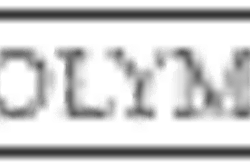A new study attempts to make neurocysticercosis diagnosis in India easier and more accurate. It suggests modifications to the existing international criteria based on the imaging and clinical features of the disease as it occurs in the country.
Diagnosis of neurocysticercosis is especially challenging in India and other developing countries where there is high prevalence of infectious conditions, such as tuberculoma, which present with similar imaging and clinical findings.
"Cysticercosis and tuberculoma are the two most common causes of ring lesion on CT," said Dr R.K. Garg, associate professor, department of neurology, King George Medical University, Lucknow, and author of the study published in Neurology India (June 2004, Vol. 52:2, pp. 171-177) in an interview with AuntMinnieIndia.com.
According to Garg, most Indian patients with neurocysticercosis do not satisfy several of the international diagnostic criteria for neurocysticercosis (Neurology, July 2001, Vol. 57:2, pp. 177-183). For instance, the study says, nonenhancing cystic lesions on computed tomography (CT) or magnetic resonance (MR) showing scolex constitute only a small fraction of Indian patients. The majority have single enhancing lesions, although multiple enhancing lesions are also not uncommon.
In keeping with the international classification, Garg suggests three categories of diagnostic criteria (absolute, major, and minor), and in addition, a new category, diagnosis with caution, in place of the existing category on epidemiological criteria.
Guidelines and limitations
Multiple, small, circumscribed, nonenhancing cystic lesions, even without scolex, have been classified as absolute diagnostic criteria because Garg reasons "they do not have any possibility other than neurocysticercosis." Scolex demonstration may not always be possible in Indian conditions because CT, which is less expensive and more commonly used, is less sensitive for its demonstration when compared to MR.
Major diagnostic criteria, which are highly suggestive but cannot conclusively prove neurocysticercosis, include single or multiple enhancing CT/MR lesions, and single or multiple small calcified nodules. In India, solitary cysticercus granuloma account for 60% of neurocysticercosis cases, according to the study.
Minor criteria, which indicate neurocystcercosis but which require more definitive diagnosis through histopathological demonstration or imaging findings, are seizures and other clinical manifestations. Seizures are the most common manifestation in India.
Imaging findings that support neurocysticercosis in case of minor criteria are plain x-ray films showing multiple cigar-shaped calcifications in the arm, thigh, and calf muscles, and direct visualisation of a cysticercosis larva in the anterior chamber of the eye with ultrasonography.
Diagnosis with caution
"If you take 10 different opinions on a ring lesion, five will say it is tuberculoma and five will say it is cysticercosis," said Garg, suggesting that whenever diagnosis is not based on the absolute criteria, the conclusion should be reached only after considering old age, pre-existing systemic tuberculosis, and HIV infection.
Diagnosis becomes tricky and extremely complicated in patients with single or multiple enhancing lesions, who have either tuberculosis or malignancy. In a study of 186 patients with single enhancing CT lesions, 24 had active systemic tuberculosis, and 11 also had a family history of tuberculosis.
In one instance, however, a patient who displayed symptoms consistent with neurocysticercosis such as seizures, multiple nontender subcutaneous nodules, and multiple nodular enhancing CT/MR lesions showed tuberculous etiology on hispathological examination of the nodule. "It is very difficult to differentiate between tuberculosis and cysticercosis," Garg admitted.
In patients with HIV infection, toxoplasmosis is the most common cause of the enhancing CT/MR lesions. Toxoplasma lesions usually involve subcortical structures such as the thalamus, basal ganglia, and cerebellum. In contrast, in neurocysticercosis the lesions are typically located at the cortical-subcortical interface, according to the study.
The study concludes that the international diagnostic criteria are more suited to diagnose neurocysticercosis in developed countries where it is uncommon and other infective conditions with similar clinical and radiological features, such as tuberculosis of the central nervous system, are not as common.
By N. Shivapriya
AuntMinnieIndia.com staff writer
August 26, 2004
Copyright © 2004 AuntMinnie.com




















